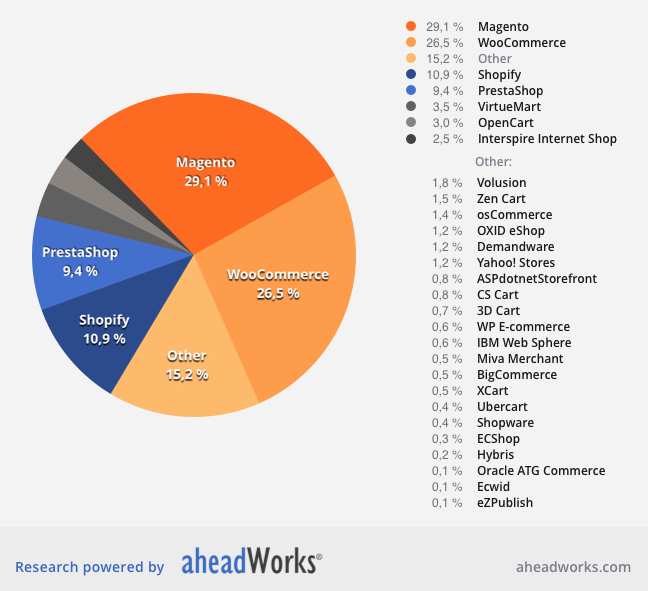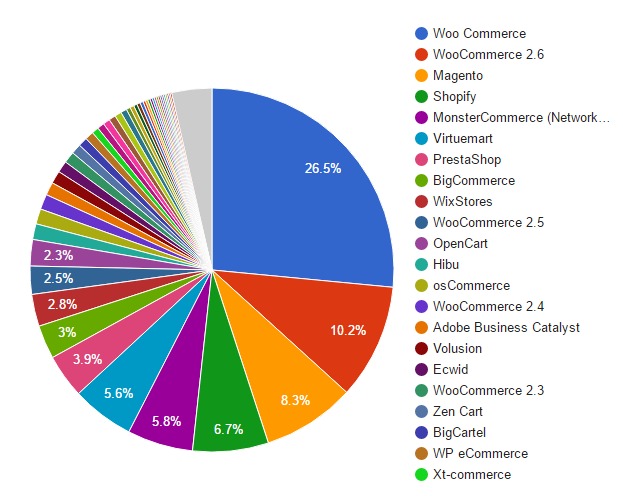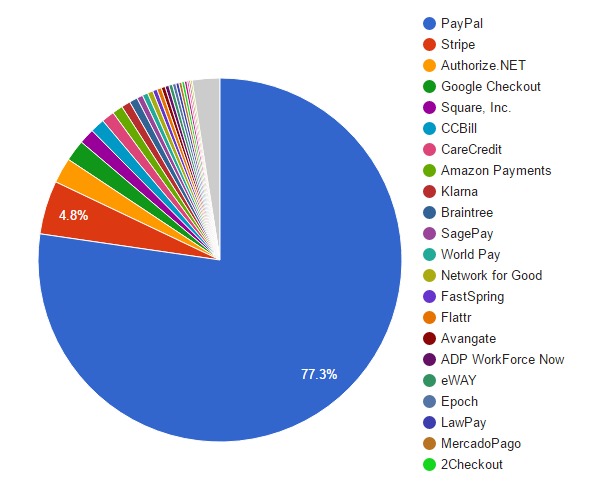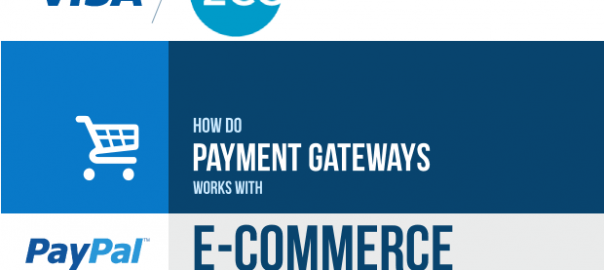We have all heard about payment gateways. Some of us are familiar with it. And for many, it is still a mystery. I think most people get overwhelmed imagining its complexity. I believe people tend to see e-commerce as something that is complex to implement, manage and maintain. Though it is not like that at all.
There is no doubt the technology involved in putting everything together from the ground up is very complex. From the cart to the customer checking out, and making payment online. And that payment reaching safely into your bank accounts. All this involves very technical processes. Many technologies come together to make it happen.
But it doesn’t mean it should be complicated implementing it on your website or payment forms. Or maintaining it for that matter. Think, for example, a car. It is quite technical to create the different parts that make up the car. But assembling it all together is not so complex. Similarly, maintaining it is also easy. If a part malfunctions, you simply change that part with a working one.
An e-commerce website also consists of modules. All these modules are put together, and they work in harmony to create a fully functioning e-commerce website. A payment gateway is also one of the many modules that make up an eCommerce website. You don’t need to understand every tiny detail of the working of a payment gateway. All we are concerned with is the broader aspect of how the payment gateway integrates with the other modules.
what Does a Payment Gateway Do?
A Payment Gateway enables a website to accept payments from their customers and clients over the net. It is very similar to the point of sale terminals that you see at your local stores. The one used online is more like its virtual counterpart.
An e-commerce site would be incomplete without a mechanism to accept payments in real-time from customers. After all, the real benefit of an eCommerce shop is that you can sell while you sleep, isn’t it? Then there are issues like cross-border selling, considering different currencies and their conversion rates. Handling all these issues is a challenge and is taken care of by the payment gateway for you.
Security features must be foolproof, wherever there is a monetary transaction involved. Usually, sites accepting payments are secured with SSL certificates. When you install a valid SSL certificate, your site can then be accessed over https, rather than the regular Http. A valid SSL certificate adds an extra layer of security by encrypting the information that you send to the payment gateway. Thus, making it difficult for a hacker to intercept this information and read it, while it is in transit from your site to the payment gateway.
But mostly you will see that e-commerce sites do not handle the customer’s sensitive information. It will store the name and address of the customer in its database, as it needs it to fulfill an order. It needs the customer name and address to courier the goods purchased. But it does not need to handle the sensitive payment details. As it can then easily be misused by anyone.
Also, if it were allowed, then the requirements to run an e-commerce site would be so high, that not many would be able to meet those criteria. So, to make things simple, the payment transaction part is totally separated and made to handle by the payment gateway.
Therefore, an individual site does not need to have an SSL to run an eCommerce site. Though Google is enforcing SSL in its own way to make the web a safer place. But you can run an eCommerce site without it.
How Does Ecommerce Website Works
To understand how a payment gateway integrates with an e-commerce website, it is important to understand how the eCommerce website works in the first place. Most e-commerce websites you see today would be running an eCommerce software that can be easily integrated with a website.
It is not practical to develop an ecommerce software from scratch when there are so many good readymade applications available. Some of these ecommerce applications act as standalone CMS that runs your entire website. Examples would be Magento (Linux, PHP, MySQL), and nopCommerce if you are looking for a platform built on Microsoft technologies.
Choosing a Reliable Ecommerce Platform for your site
You want to choose a reliable e-commerce platform to run your website. Most of these e-commerce platforms are standalone e-commerce software. You build your site on top of it. In essence, it is the primary software that runs your entire website for you. It lets you create pages, posts, add products & its variants, define shipping rules, handles shipping cart, shop, checkout and much more.
Then we have the CMS platforms like WordPress, Joomla, Drupal. They were built for creating websites. They would have been left behind if they didn’t let customers add a shop to their site. This was solved by creating ecommerce plugins (WooCommerce is the most popular of them all) and ecommerce extensions.
Plugins & extensions are pluggable pieces of software that you can add on to these CMS platforms to enhance their functionality. Extending the capabilities of these CMS platforms. In fact, plugin development is big business in itself. Creating a solution that people are looking for. The marketing model for such plugins has been to offer them for free. The paid versions have enhanced capabilities.
So, these eCommerce plugins & extensions are more like add-ons, rather than standalone software. But do not take them lightly because of this.
In fact, this study done in March 2016, shows that Magento & WooCommerce lead the ecommerce platform market share.

Magento powers 29.1 percent of all e-commerce sites. And WooCommerce is a close second at 26.5 percent market share.
These eCommerce plugins & extensions are also marketed in a very similar fashion. The basic software is free to use. In fact, the features available for free are sufficient to run an e-commerce website successfully. But then there are always extras that you can add to your site, like subscriptions, recurring payments, etc. Those are additional extensions you can buy. They are usually nominally priced, which you would need to renew every year to get support & updates. So, it is a win-win situation for everyone involved.
Top 5 Ecommerce Platforms
However, the below study of the top eCommerce platforms puts WooCommerce ahead of Magento. Unlike the study above that puts Magento first & then WooCommerce. I couldn’t get the dates for this study. So I don’t know which study is more recent.
Listing the top 5 ecommerce platforms that dominate the ecommerce market share. Study by Datanyze.

So as per this study, the top 5 are as follows:
- WooCommerce
- Magento
- Shopify
- MonsterCommerce
- Virtuemart
Choose any of the platforms above to power your ecommerce site.
Designing the Ecommerce website
Once you have made a choice on the platform you are going to use, comes the designing phase. At this stage, you will need a website designer or ecommerce website development company to handle your website building for you. Though the web design agency themselves would have been able to guide on your choice of platforms. But I believe understanding a little bit about the platforms and making an informed decision is always better.
Most of the eCommerce platforms come with default sets of themes. Themes are templates that control the design, look, and layout of your website. You can activate or apply those default themes and start using the site as it is. But it may be too basic for you to make an impact on your audience. Therefore, you will need a custom theme designed that addresses your requirements and business objectives.
There are marketplaces like Themeforest.net from where you can buy themes for various ecommerce platforms. We also have our own small marketplace for WordPress Themes here: https://www.raythemz.com/.
Disadvantages of a template-based site
If you look around, you will find very beautifully designed themes for your site. But you will still need some technical skills and a lot of time to configure it. Another disadvantage that I see with pre-designed themes, is that they come loaded with too many options, CSS, and JavaScript.
A theme must have many options, as it caters to a wider audience. Unless it appeals to a larger audience, it would not sell. Therefore, they are loaded with options, of which you will use only a few. Your site will likely be slow and bulky.
Advantages of using a pre-designed theme
The advantages would be mainly cost savings. They are very inexpensive. It would cost you somewhere around $50 to $100. They are well designed and come loaded with features and options you can choose from.
But at the end of the day, if you want a serious website that generates business for you. You will need someone to custom design the website for you.
Choosing the Right Payment Gateway for Your Ecommerce Site
With the completion of the design phase, your eCommerce website is now almost ready. It is time to decide which payment gateway is best for you. There are many payment gateways to choose from. And the country you reside in will also make an impact on your choice. You should choose a payment gateway that offers reliable services, has a good reputation, and is well known so that people choose to trust it.
How to Integrate a Payment Gateway into a Website
Integrating a payment gateway into your e-commerce website is fortunately very easy. If we had to code everything from scratch, then it would be quite technical and difficult to implement. But since we are using an existing e-commerce platform, we don’t need to get all that technical.
All major eCommerce platforms come bundled with a set of payment gateways that you can easily activate & use. If it is not available in the core offerings for the eCommerce platform, then you will find a plugin or an extension that adds your preferred payment gateway to it.
what is payment gateway – how it works
As we have learned in the past, a payment gateway is an application that facilitates the transfer of payment from the customer to the merchant.
However, prior to activating the payment gateway, you will need to set up an account with that payment processor. For example, if you want to setup PayPal as your preferred payment gateway, then first you need to create an account with PayPal. They have several options you can choose from. You can register as an individual or a business. It offers different types of accounts with different privileges. You will choose the one that is best suited to your needs.
It does not end with just signing up. PayPal verifies your credentials and establishes your identity. You will need to furnish your bank account details where your payment would get withdrawn. This helps prevent fraud and make online business safer.
Different countries have different legal requirements. However, most payment gateways would have a similar requirement for signing up.
When a customer checks out from your eCommerce website, they are directed to the payment gateway. The payment gateway is fully secured using an SSL certificate. So, it is safe for your customers to input their payment details. It processes that information, debits the customer’s account and credits the merchant’s account. If you want to get into the nitty-gritty of how this happens, go through the following two links below:
Typical Transaction Process – Wikipedia
How payment gateways work
How Does PayPal Work
Installing Payment Gateway on Your Site
Once you have signed up for the payment gateway, now you can activate it on your site. During sign up, you will get some account-specific details that you will need to input while installing the payment gateway.
It is important so that the payment gateway would know which account to credit once your customer pays you online. Then you will just move on to customizing other options like, which page to show after a successful transaction. Or when the transaction fails. The different modes of payments you want to allow on your site etc.
It mainly involves choosing between different options. It is not that difficult to setup. Once the options are configured, you are ready to accept payments online.
Listing the Top Payment Gateways
So now you have a fair idea of how an e-commerce site works. You also have a good idea of how the payment gateway is acquired and integrated with your site. So, which are the top payment gateways being used by e-commerce websites? Let’s take a look.

Study by Datanyze.
Per the study by Datanyze, PayPal is the leader among them all. It has a market share that far exceeds any other payment gateway available worldwide. Among the Alexa top 1M sites, the number of sites using PayPal stands at a staggering 702,302 sites. Stripe comes at a distant second with 43,300 users.
The listing below includes the top 10 payment gateways being used worldwide.
- PayPal
- Stripe
- Authorize.NET
- Google Checkout
- Square, Inc.
- CCBill
- CareCredit
- Amazon Payments
- Klarna
- Braintree
But remember that specific countries have specific payment gateways that work best in that region. Therefore, the list above may not be the best fit for your site. You should do your own research before opting for a payment gateway for your e-commerce website.
Conclusion
So now you have an idea of how an eCommerce website works. What payment gateways actually are. And how they are integrated with your e-commerce website.
You also have a list of the top 5 eCommerce platforms to choose from. And the top 10 payment gateways by the number of sites using them.
If you are contemplating a new e-commerce website for your business, this should give you a fair understanding of what you are up against. More specifically how everything comes together to provide that seamless e-commerce experience that we have all gotten used to.
Please do provide your feedback and opinion on the article. Suggestions and corrections are all welcome.

